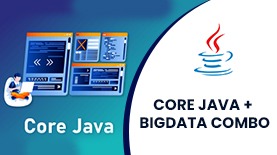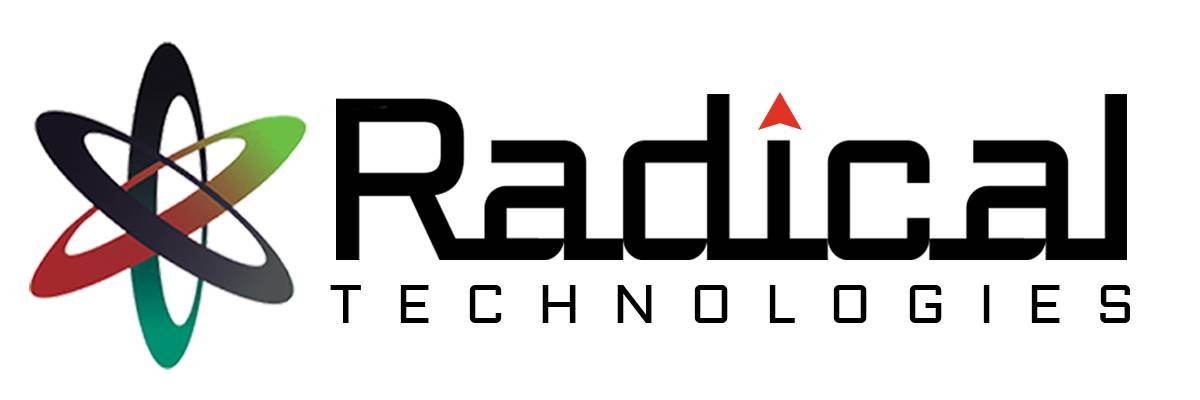- Home
- About Us
- Courses
- Combo Courses
- Programming Combo Courses
- Non Programming Combo Courses
- Linux & Cloud Combo
- Linux & DBA Combo
- AWS & Devops Combo
- Salesforce Combo
- Azure Admin Combo
- Azure Cloud & Azure Devops Combo
- Tableau Informatica Combo
- Power BI Informatica Combo
- Power BI & MSBI Combo
- Salesforce Manual Testing Combo
- Salesforce Tableau Combo
- Data Analytics Combo
- MCSA Azure Combo
- Powerplatform Combo
- ADF & Power BI Combo
- BA & Tableau Combo
- PG Diploma
- Online Schedule
- Offline schedule
- Job Openings
- Certifications
- Contact Us
CORE JAVA + BIGDATA COMBO

A Core Java and Big Data combo refers to the integration of programming skills in Java with expertise in handling and analyzing large-scale data sets, typically associated with big data technologies. the Core Java and Big Data combo equips individuals with the programming skills and tools needed to work with and extract insights from massive datasets.
1987 Satisfied Learners
CORE JAVA + BIGDATA COMBO Training in Pune/ Online
Courses Included:-
COREJAVA + HADOOP DEVELOPMENT + SPARK & SCALA
Duration of Training : 4 months
Batch type : Weekdays/Weekends
Mode of Training : Classroom/Online/Corporate Training
Why Radical Technologies
CORE JAVA
What is Core Java?
It lays the foundation in terms of rich concepts and unique style of implementation, setting a benchmark in the industry.
Being an open-source, many technologies like Selenium, Hadoop, Sales Force and Data analytics have based their implementation on Java.• It is basically used to build stand-alone applications.
COURSE CONTENT
Introduction To Java
History of Java
- What is Java , Java Flavors, characteristics
- JVM Architecture
- Bytecode
- Class Loader
- Unicode
- Classpath
- Path
Fundamentals of Java Programming
- Obect Oriented concepts (OOP)
- Keywords, Datatypes, Variables, Operators, Casting
- Selection statement (if, switch)
- Control statements (while, do while, for)
- Conditional statements (if, else, elseif, ? ? )
- Static
- Arrays
Object Oriented Programming with Java
- Classes and Objects
- Structure of a class – its internals (Data Members, methods)
- Using static
- Constructor
- this keyword
- modifiers
- playing with the object (copying, casting)
- Garbage collection
- Abstract class
Inheritance
- Basics (extends keyword)
- Modifiers and their scope
- Deriving a class
- super, final keyword
- why java does not support multiple inheritance?
Polymorphism
- overloading a method
- overloading a constructor
- method overriding
- accessing base class method
Packages and Interfaces
- basics
- modifiers and their scope chart
- setting classpath
- compiling and accessing a packaged class
- types of packages
- user defined package
Exploring java.lang package
- String, StringBuffer, Arrays
- Wrapper classes
Exception Handling
- Basics
- Hierarchy of exceptions
- Handling exception – Try, catch, finally, throw, throws
- User defined exceptions
Threads
- Basics, Thread class, Runnable Interface
- Thread model
- Life cycle – start(), run()
- Scheduling
- Deadlocks/Concurrency issues
- Synchronization – as a block, as a modifier
- Daemon thread
I/O Streams
- Introduction
- Hierarchy of streams
- IO Stream, Byte Stream, Character Streams
- BufferedInputStream, BufferedOutputStream
- Reader and Writer class
- BufferedReader, PrintWriter
- Serialization
Collection Framework
- basics, hierarchy
- legacy classes – Vector, Queue, Stack, Enumeration, Dictionary, Properties
- List, ArrayList, LinkedList
- Set, HashSet, TreeSet
- Map, HashMap, TreeMap
- Generics
- Annotations
- Boxing/Unboxing
- Enums
Introduction to functional style of programming
Mini application – discussion/implementation
Tools
- Javadoc
- Javap
- Jar
IDE Tools
- Eclipse
- Myeclipse
Highlights of Training
- Industry experienced Professional
- Hands-on experience with Project orientation
- Interview based Questions
Our Approach
- Proper Communication with the student
- Course Ends With One Live Project
- Test on Each Topics
- Certification Overview
- Interview and resume preparation
- Discussion on Real Time Scenarios
HADOOP DEV + SPARK & SCALA
Why Hadoop?
- Solution for BigData Problem
- Open Source Technology
- Based on open source platforms
- Contains several tool for entire ETL data processing Framework
- It can process Distributed data and no need to store entire data in centralized storage as it is required for SQL based tools.
COURSE CONTENT :
HADOOP DEV + SPARK & SCALA + NoSQL + Splunk + HDFS (Storage) + YARN (Hadoop Processing Framework) + MapReduce using Java (Processing Data) + Apache Hive + Apache Pig + HBASE (Real NoSQL ) + Sqoop + Flume + Oozie + Kafka With ZooKeeper + Cassandra + MongoDB + Apache Splunk
Big Data :
Distributed computing
Data management – Industry Challenges
Overview of Big Data
Characteristics of Big Data
Types of data
Sources of Big Data
Big Data examples
What is streaming data?
Batch vs Streaming data processing
Overview of Analytics
Big data Hadoop opportunities
Hadoop :
Why we need Hadoop
Data centers and Hadoop Cluster overview
Overview of Hadoop Daemons
Hadoop Cluster and Racks
Learning Linux required for Hadoop
Hadoop ecosystem tools overview
Understanding the Hadoop configurations and Installation
HDFS (Storage) :
HDFS
HDFS Daemons – Namenode, Datanode, Secondary Namenode
Hadoop FS and Processing Environment’s UIs
Fault Tolerant
High Availability
Block Replication
How to read and write files
Hadoop FS shell commands
YARN (Hadoop Processing Framework) :
YARN
YARN Daemons – Resource Manager, Node Manager etc.
Job assignment & Execution flow
MapReduce using Java (Processing Data) :
The introduction of MapReduce.
MapReduce Architecture
Data flow in MapReduce
Understand Difference Between Block and InputSplit
Role of RecordReader
Basic Configuration of MapReduce
MapReduce life cycle
How MapReduce Works
Writing and Executing the Basic MapReduce Program using Java
Submission & Initialization of MapReduce Job.
File Input/Output Formats in MapReduce Jobs
Text Input Format
Key Value Input Format
Sequence File Input Format
NLine Input Format
Joins
Map-side Joins
Reducer-side Joins
Word Count Example(or) Election Vote Count
Will cover five to Ten Map Reduce Examples with real time data
Apache Hive :
Data warehouse basics
OLTP vs OLAP Concepts
Hive
Hive Architecture
Metastore DB and Metastore Service
Hive Query Language (HQL)
Managed and External Tables
Partitioning & Bucketing
Query Optimization
Hiveserver2 (Thrift server)
JDBC, ODBC connection to Hive
Hive Transactions
Hive UDFs
Working with Avro Schema and AVRO file format
Hands on Multiple Real Time datasets
Apache Pig :
Apache Pig
Advantage of Pig over MapReduce
Pig Latin (Scripting language for Pig)
Schema and Schema-less data in Pig
Structured , Semi-Structure data processing in Pig
Pig UDFs
HCatalog
Pig vs Hive Use case
Hands On Two more examples daily use case data analysis in google. And Analysis on Date time dataset
HBASE (Real NoSQL) :
Introduction to HBASE
Basic Configurations of HBASE
Fundamentals of HBase
What is NoSQL?
HBase Data Model
Table and Row.
Column Family and Column Qualifier.
Cell and its Versioning
Categories of NoSQL Data Bases
Key-Value Database
Document Database
Column Family Database
HBASE Architecture
HMaster
Region Servers
Regions
MemStore
Store
SQL vs. NOSQL
How HBASE is differed from RDBMS
HDFS vs. HBase
Client-side buffering or bulk uploads
HBase Designing Tables
HBase Operations
Get
Scan
Put
Delete
Live Dataset
Sqoop :
Sqoop commands
Sqoop practical implementation
Importing data to HDFS
Importing data to Hive
Exporting data to RDBMS
Sqoop connectors
Flume :
Flume commands
Configuration of Source, Channel and Sink
Fan-out flume agents
How to load data in Hadoop that is coming from web server or other storage
How to load streaming data from Twitter data in HDFS using Hadoop
Oozie :
Oozie
Action Node and Control Flow node
Designing workflow jobs
How to schedule jobs using Oozie
How to schedule jobs which are time based
Oozie Conf file
Scala :
Scala
Syntax formation, Datatypes , Variables
Classes and Objects
Basic Types and Operations
Functional Objects
Built-in Control Structures
Functions and Closures
Composition and Inheritance
Scala’s Hierarchy
Traits
Packages and Imports
Working with Lists, Collections
Abstract Members
Implicit Conversions and Parameters
For Expressions Revisited
The Scala Collections API
Extractors
Modular Programming Using Objects
Spark :
Spark
Architecture and Spark APIs
Spark components
Spark master
Driver
Executor
Worker
Significance of Spark context
Concept of Resilient distributed datasets (RDDs)
Properties of RDD
Creating RDDs
Transformations in RDD
Actions in RDD
Saving data through RDD
Key-value pair RDD
Invoking Spark shell
Loading a file in shell
Performing some basic operations on files in Spark shell
Spark application overview
Job scheduling process
DAG scheduler
RDD graph and lineage
Life cycle of spark application
How to choose between the different persistence levels for caching RDDs
Submit in cluster mode
Web UI – application monitoring
Important spark configuration properties
Spark SQL overview
Spark SQL demo
SchemaRDD and data frames
Joining, Filtering and Sorting Dataset
Spark SQL example program demo and code walk through
Kafka With ZooKeeper :
What is Kafka
Cluster architecture With Hands On
Basic operation
Integration with spark
Integration with Camel
Additional Configuration
Security and Authentication
Apache Kafka With Spring Boot Integration
Running
Usecase
Apache Splunk :
Introduction & Installing Splunk
Play with Data and Feed the Data
Searching & Reporting
Visualizing Your Data
Advanced Splunk Concepts
Cassandra + MongoDB :
Introduction of NoSQL
What is NOSQL & N0-SQL Data Types
System Setup Process
MongoDB Introduction
MongoDB Installation
DataBase Creation in MongoDB
ACID and CAP Theorum
What is JSON and what all are JSON Features?
JSON and XML Difference
CRUD Operations – Create , Read, Update, Delete
Cassandra Introduction
Cassandra – Different Data Supports
Cassandra – Architecture in Detail
Cassandra’s SPOF & Replication Factor
Cassandra – Installation & Different Data Types
Database Creation in Cassandra
Tables Creation in Cassandra
Cassandra Database and Table Schema and Data
Update, Delete, Insert Data in Cassandra Table
Insert Data From File in Cassandra Table
Add & Delete Columns in Cassandra Table
Cassandra Collections
Learn Core Java & Bigdata Combo – Course in Pune with Training, Certification & Guaranteed Job Placement Assistance!
Online Batches Available for the Areas
Ambegaon Budruk | Aundh | Baner | Bavdhan Khurd | Bavdhan Budruk | Balewadi | Shivajinagar | Bibvewadi | Bhugaon | Bhukum | Dhankawadi | Dhanori | Dhayari | Erandwane | Fursungi | Ghorpadi | Hadapsar | Hingne Khurd | Karve Nagar | Kalas | Katraj | Khadki | Kharadi | Kondhwa | Koregaon Park | Kothrud | Lohagaon | Manjri | Markal | Mohammed Wadi | Mundhwa | Nanded | Parvati (Parvati Hill) | Panmala | Pashan | Pirangut | Shivane | Sus | Undri | Vishrantwadi | Vitthalwadi | Vadgaon Khurd | Vadgaon Budruk | Vadgaon Sheri | Wagholi | Wanwadi | Warje | Yerwada | Akurdi | Bhosari | Chakan | Charholi Budruk | Chikhli | Chimbali | Chinchwad | Dapodi | Dehu Road | Dighi | Dudulgaon | Hinjawadi | Kalewadi | Kasarwadi | Maan | Moshi | Phugewadi | Pimple Gurav | Pimple Nilakh | Pimple Saudagar | Pimpri | Ravet | Rahatani | Sangvi | Talawade | Tathawade | Thergaon | Wakad


